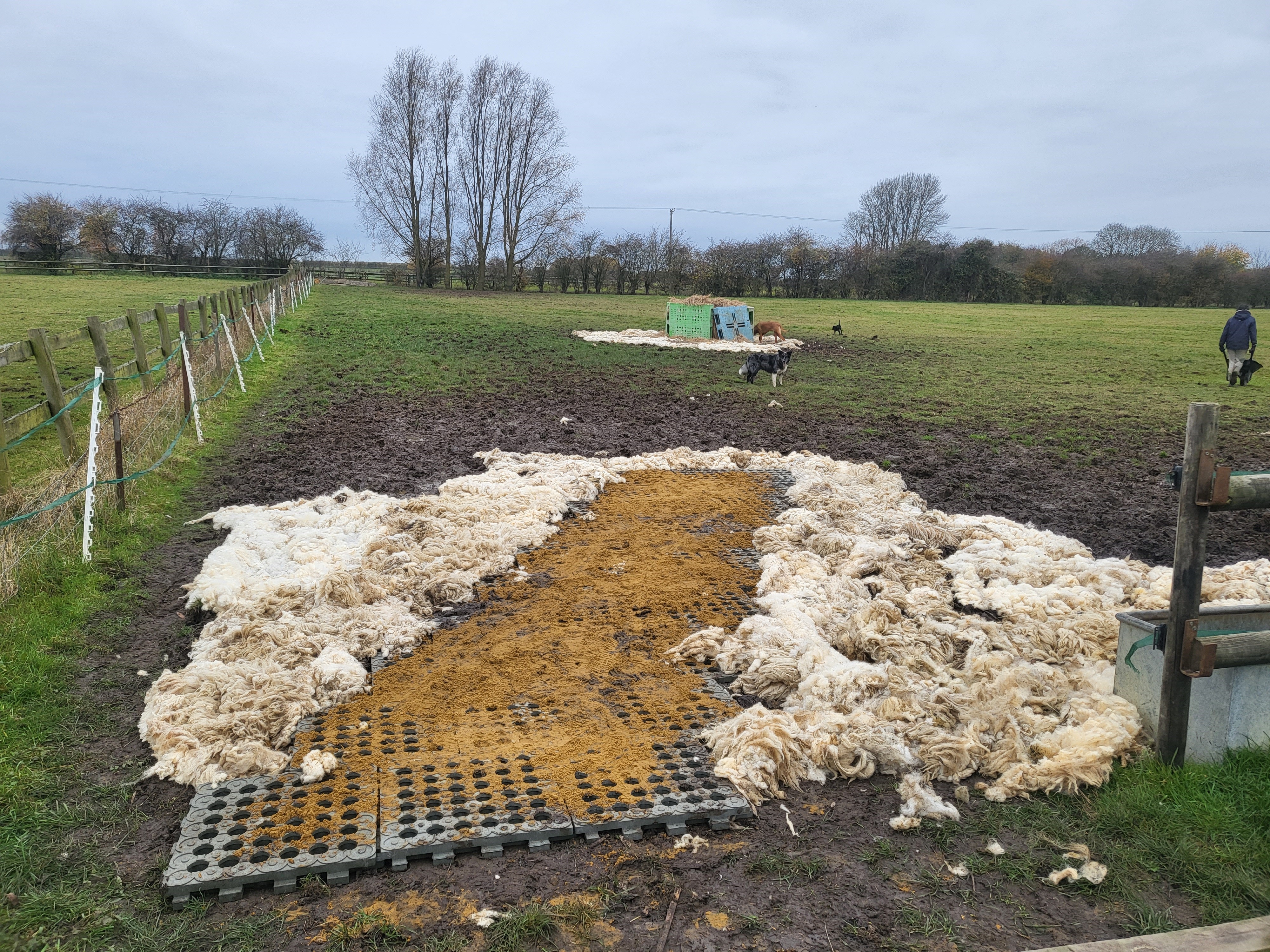Is there really a miracle cure for the slippy, slimy, slidey, sticky gateways of every winter paddock? Well, actually, no – but there are a lot of things I have learnt over the years that can help a great deal. And, hopefully, there are just a couple of things in this guide that can help too!
Location, location, location
This is probably a really difficult one, but if you had a choice of where to live, there are definitely soil types much better at drainage than others. I happen to live on one of the worst types of soil for deep mud and slow drying, which is peat. Although for sticky, heavy and poor drainage, clay soil is well up there. Sand is a really great soil for good drainage, and very little mud, but does come with other risks around ingestion when grazing. Honestly, is there ever a perfect answer with horses?
Grass types
Rye grass is a very good grass for covering gateways. It has a wide, thick blade, which creates good stability under foot, and a deep root, but guess what? (Yes, another but!) It is a grass more suited to cattle due to its high sugar levels and is unsuitable for laminitis, so using this in gateways can be a great option, but it is a poor option for overfeeding the rest of your paddocks or sugar-sensitive horses.
Routine
Field rotation is an obvious answer to help with gateways getting overused, as this allows the ground to rest. It also has huge perks right across your grazing with very few buts. I guess the only but here is how much space you have and how much you can reasonably rotate. Having three fields is the ideal minimum to allow the ground sufficient time to rest and fully recover.
Hardstanding/dry turnout
In an ideal world, I think this might be the dream for most of us! You can’t have mud if you aren’t on grass, right? Some people might use their arenas, some might build a lunge pen or separate and specific turnout, and some might be able to lay concrete around their shelters and stables. But this can be very costly to install, is unlikely to be an option on rented land or livery yards and could even be subject to planning permission.
Simply covering the mud
This is the option I have been left with, and I found something called mud control mats. They are expensive but they are also moveable and reusable, will lay straight on thick mud with no prep work and they actually work! They don’t break down, sink or move, and create a mud-free stable area for your horses. I have just laid my first 50 and am really pleased with the results. I am now saving up for more.
Other coverings can include woodchips, which can be inexpensive if you can get them tipped directly from a tree surgeon, but will break down fairly quickly during winter months. Sheep’s fleece can be a great way to help soak up liquid and make the ground firmer under foot, but it is slow to break down. I have decided this is a suitable alternative while saving up for more mats, as I plan on covering the area in fleece with mats permanently, so I am not concerned with the slow breakdown, as I do not wish to reseed or repair the area back to grass.

Here are my first efforts in a long process of better winter-proofing my field – we are all in this together!




